This post may contain affiliate links. As an Amazon Associate I earn from qualifying purchases, but there is no additional cost for you. Please see my Disclosure page for more information.
You’ve got your RV and you’re getting ready for your first road trip, but you know you also want to bring a car to drive around in while the RV is parked. So how do you bring along your car? You tow it behind your RV. Here’s what you need to get started towing with your RV.
There are three ways to tow a vehicle with your RV
1. 4 Down
This refers to all four wheels being on the ground. A base plate is installed on the front of your vehicle, which in turn connects to your RV’s tow hitch via a tow bar. Whether you can tow 4 down depends on your drive train- our 2006 CR-V has to be towed four down, but our 2007 Camry Hybrid can’t be. Consult your owner’s manual for the preferred towing method for your vehicle.
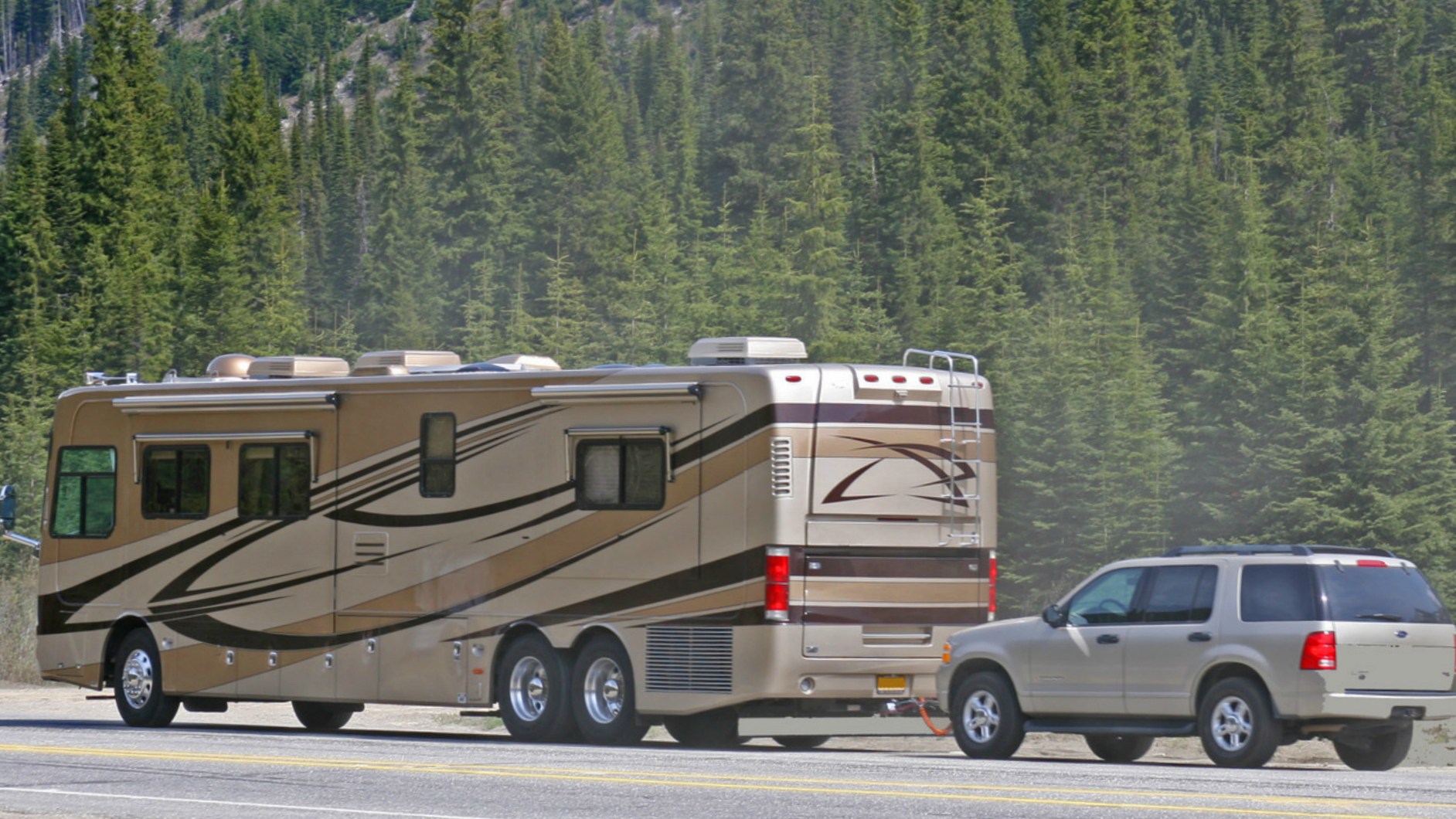
2. Tow Dolly
You drive the front two wheels of your vehicle up on the dolly (this is the brand we have) then securely strap the front wheels down. The rear wheels are in contact with the road the entire time. There’s no installation on your vehicle needed, so it can be a bit more flexible, though it is a bit more of a hassle to get your vehicle loaded and unloaded and securely strapped down.
Just as your ability to tow 4 down depends on your drive train, so does your ability to tow using a tow dolly. Be sure to consult your owner’s manual for the preferred towing method.
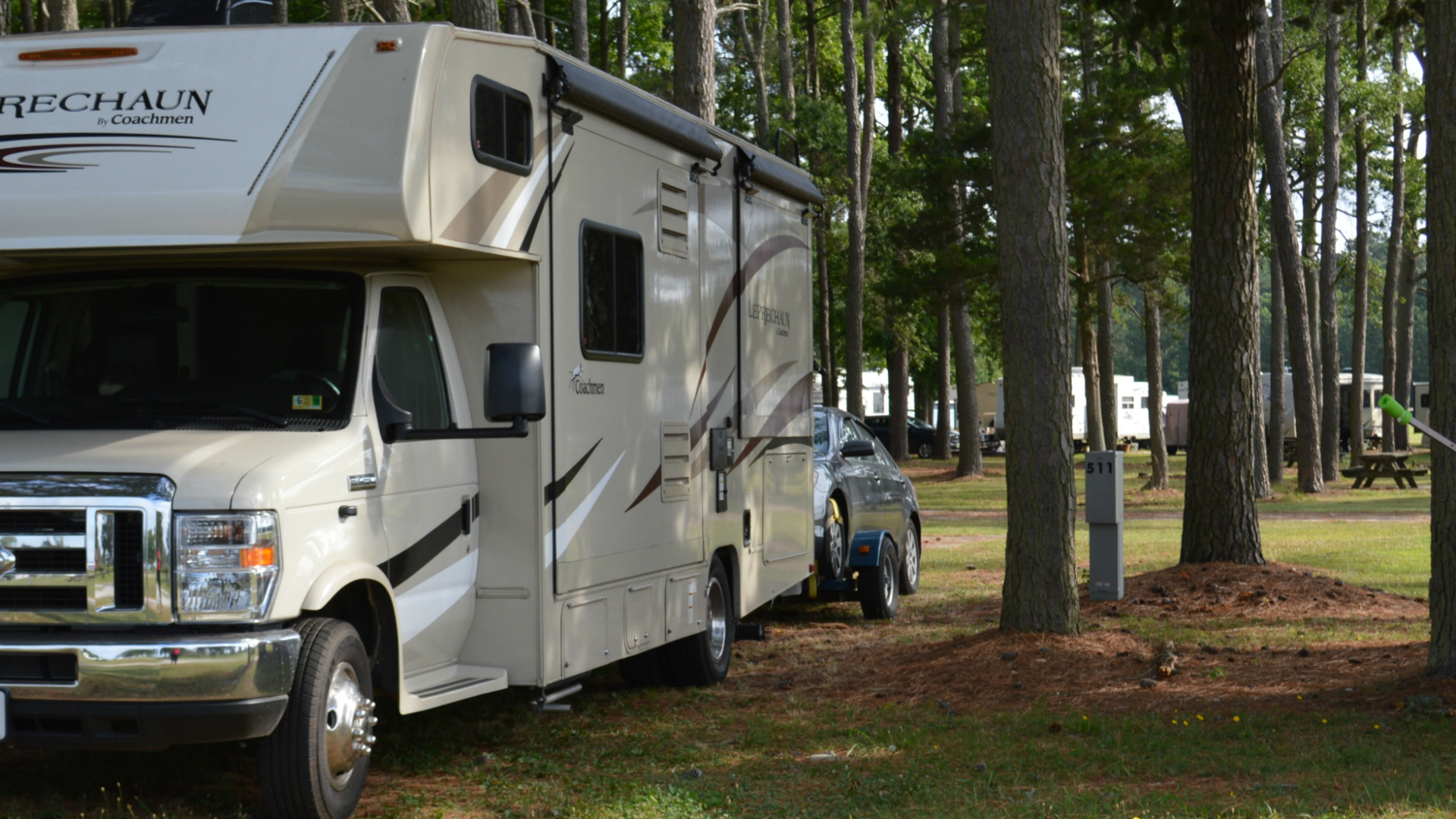
It’s a good idea to check your owner’s manual before you decide on a towing method and head to the trailer dealership or wherever you’ll get the base plate installed. We had planned on towing our CR-V behind our Class C with a tow dolly. We’d compared prices of the base plate and tow bar setup and the tow dolly and decided the tow dolly would work better for us and allow us to bring either car.
After we bought the dolly and brought it home, I checked the owner’s manual to see whether we needed to put it in neutral while we were driving. We got an unpleasant surprise when we discovered that the CR-V could only be towed 4 down. We thought about returning the dolly and getting a base plate installed and finding a tow bar, but at that point, we were running short on time and needed to get the details finalized quickly for a road trip we were embarking on in just a few days.
After considering our options and checking the Camry’s owner’s manual, we decided to bring it instead. We wouldn’t be able to haul our bikes in it as we’d planned with the CR-V, so we also had to buy a rear ladder bike rack for the RV. It all worked out in the end, but in the moment it was stressful.
All that stress could have been avoided if we’d checked the owner’s manuals before settling on our towing method. Don’t do what we did!
3. Trailer
You can also put your entire vehicle on a trailer, which could be open or enclosed. Whether this is a good option depends on the size and weight of your vehicle and the trailer and the power of the RV doing the towing. Weight is an issue, but wear and tear on the vehicle being towed is drastically reduced.

8 things to consider while towing with your RV
1. Make sure your RV’s engine can handle the weight.
Add up the weight of the vehicle, the tow dolly or trailer, plus all the stuff you’re bringing along. Overloading the engine is a great way to kill the engine and end up with expensive repairs.
2. Towing a vehicle means your mileage will be worse.
RVs don’t get great mileage to begin with, and towing will further decrease that mileage. Tow the smallest vehicle you can (this is part of why we kept the tow dolly and towed our Camry instead of the larger CR-V) and plan to spend more money on gas.
3. Take extra time adjusting your side mirrors.
Be aware that blind spots are larger and mirrors may not help entirely, and be more cautious when turning and changing lanes. If you have a backup camera that can be left on, use it when appropriate to keep an eye on what’s going on behind you.
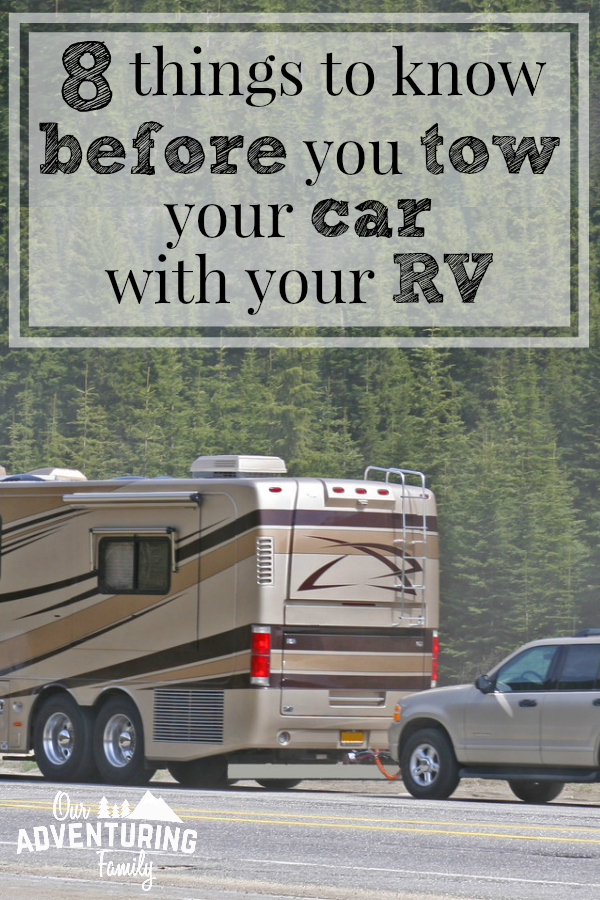
4. Be sure that you have the appropriate tow brake installed.
You should not be towing a vehicle without a way to slow it down.
5. Take your time while traveling.
Drive below the speed limit (most tow dollies and trailers carry 55 mph speed recommendations) and be aware of what other drivers are doing. Many people driving smaller vehicles don’t understand how long it takes to brake or to change lanes and will often make sudden moves that require you to react quickly, even if you don’t really have the space to do so.
6. Watch your turning radius, especially in gas stations or other tight spots.
If you’re not careful, you can easily get stuck in tight quarters in a gas station or even an awkwardly tight turn on the road. Fuel up at a truck stop if possible (so much more room!) and be sure you can make any tight turns before you commit to them.
7. Speaking of tight turns, do not back up while towing.
It is too easy to jackknife your trailer or vehicle, damaging it and/or your RV. If you end up in a spot where you need to back up, take a deep breath. Then take the time to unload, unhitch, move, and load it all back. It takes time and is frustrating, but it can be done.
8. Be aware of your surroundings and your route.
If you’re in unfamiliar territory, make sure you don’t go down narrow roads that dead end without enough room to turn around. If you need to, stop and walk ahead to check your route (or use a drone if you have one and it’s legal where you are) before driving any further. This is an especially helpful tactic when you’re boondocking.
~~~~~
If you’re looking for more information, I shared some tips for towing with a tow dolly here. Most of what I shared applies regardless of the method you are using to tow.
You may hear a towed vehicle referred to as a “toad” or a “dinghy”, but regardless of what you call it, you can tow your passenger vehicle behind your RV. With some planning and preparation, you can have a safe, enjoyable, mishap-free trip!
I shared some of our towing mishaps learning experiences, do you have any to share?
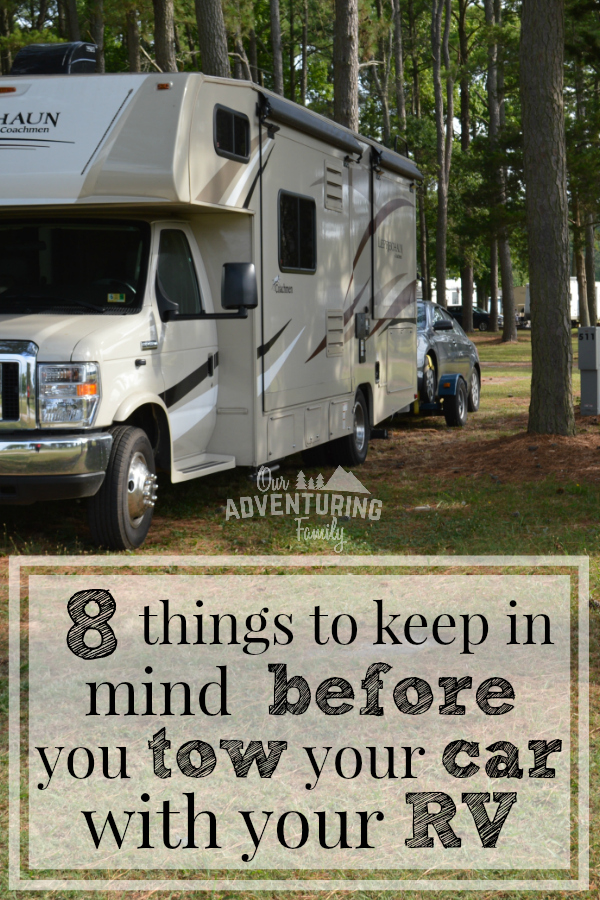
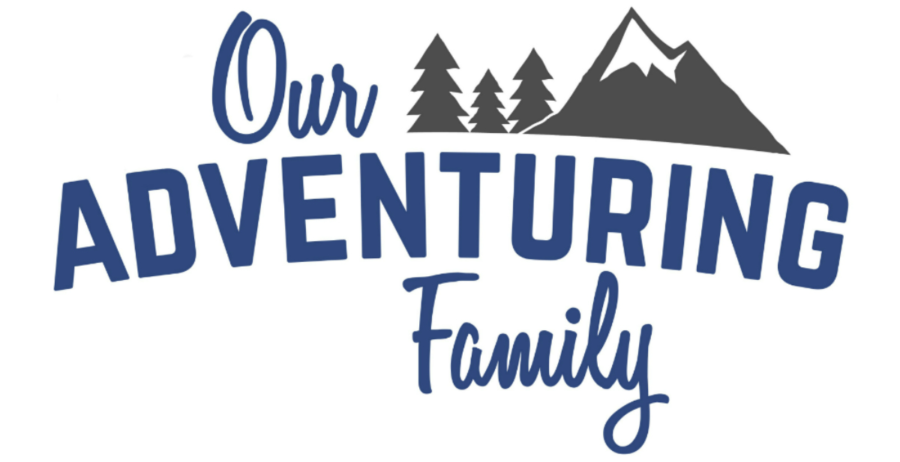

It seems like a simple thing, to make sure that your RV can handle the weight you plan to tow, but I bet that it gets overlooked often. How do you go about looking into what weight your RV can handle? This is something I will have to remember if I get an RV in the future.
As you said, it is simple, but also important. Here’s a great article on how to figure out your towing capacity: https://www.curtmfg.com/towing-capacity. It explains it much, much better than I could 🙂
In general, an RV should be able to tow a vehicle. On the other hand, if you’re towing a trailer with a truck or SUV, you are much more likely to run into issues if you’re not careful. We keep trying to find a travel trailer our Honda CRV could tow, but its towing capacity is so low that we could only tow the smallest of teardrop trailers. With three kiddos, a teardrop trailer is now what we’re looking for.
In the 70’s, I pulled a 3/4 ton Chevy van, fully loaded behind my Kayot motorhome on service trips. The 440 Dodge chassis had the power but lousy brakes. On a trip from California to New Mexico I got 4.5 MPG, vs, the 5.0 I got without the van behind me.
I towed a relatively heavy Land Rover behind a Cat 3160 and didnt know it was even behind.
Recently I bought a 35 foot Winne with a 8.1 Chev and hooked up my Chevvy HHR. There is absolutely no difference between towing with it or without.
I have to wonder where all this fuss about auxilliary braking systems comes from.
I do not like the look of them and to the contrary see a definite possibility of problem and disaster. Imagine, you apply the brakes in your MH and the towed vehicle slams on its brakes and locks up. You are dragging a stone, lose control and the result is not good.
Is there a directory of which states and provinces in Canada that require, (and inspect as you cross the border) to have aux brakes on your toad?
Thanks for your indulgence and feedback.